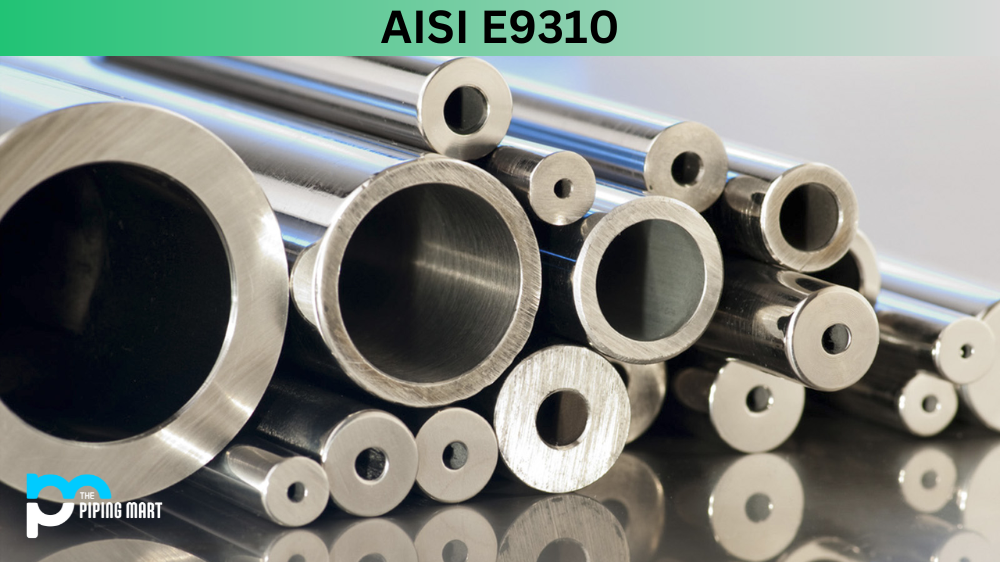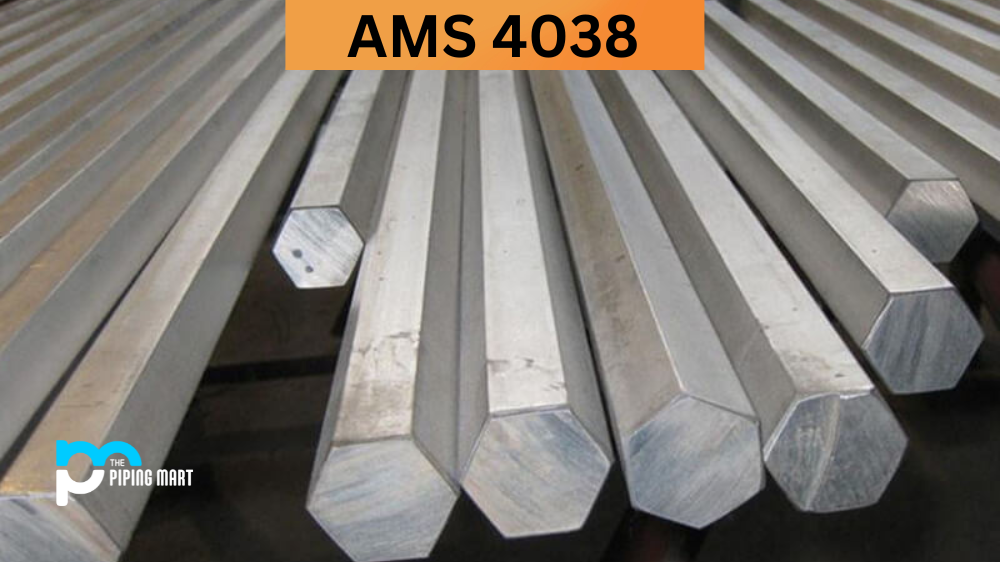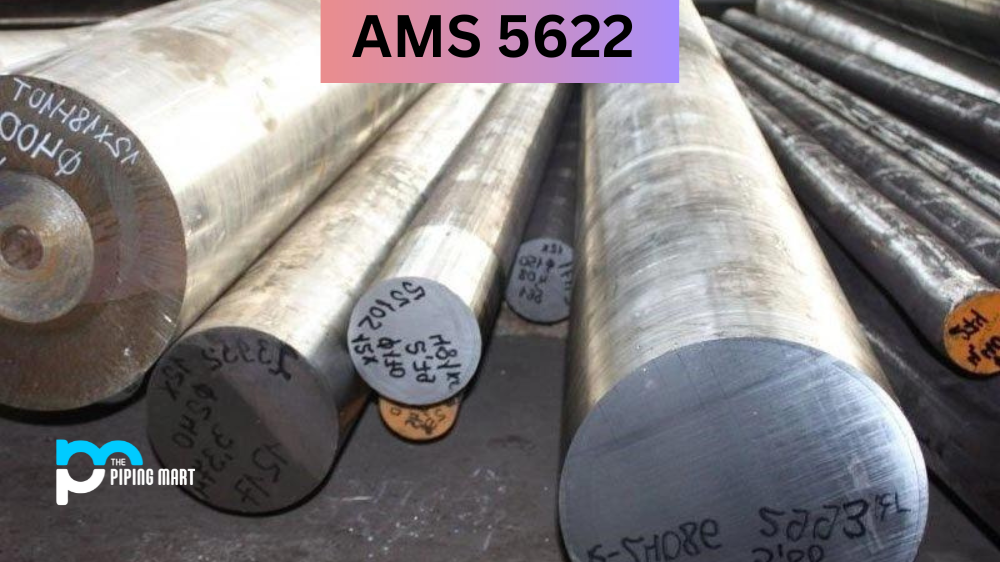If you’re a metallurgy enthusiast or a mechanical engineer, you’re already familiar with AISI E9310. It’s a popular alloy steel widely used in various applications, from manufacturing to aerospace. But if you’re new to metallurgy, you might wonder what AISI E9310 is and what makes it a popular choice for many industries. This comprehensive guide will provide you with all the information you need.
What is AISI E9310?
AISI E9310 is a low-alloy steel that was originally designed for use in aircraft engine components. It’s classified as a nickel-chromium-molybdenum steel, which means it contains these elements in varying proportions.
AISI E9310 Composition
The specific composition of the alloy can vary depending on the manufacturer, but most versions of AISI E9310 contain around 0.08% to 0.15% carbon, 0.40% to 0.70% manganese, 0.80% to 1.10% chromium, 0.25% to 0.35% molybdenum, and 1.35% to 1.85% nickel.
| Element | Content (%) |
|---|---|
| Iron, Fe | 93.77-95.19 |
| Nickel, Ni | 3.0-3.50 |
| Chromium, Cr | 1.0-1.40 |
| Manganese, Mn | 0.450 – 0.650 |
| Silicon, Si | 0.200-0.350 |
| Molybdenum, Mo | 0.0800-0.150 |
| Carbon, C | 0.0800-0.130 |
| Sulfur, S | ≤ 0.0250 |
| Phosphorous, P | ≤ 0.0250 |
AISI E9310 Mechanical Properties
The mechanical properties of AISI E9310 make it an excellent choice for stress-bearing components. The alloy is generally known for being tough, ductile, and strong. Its tensile strength ranges from 1640 MPa to 1900 MPa, depending on the heat treatment method used. Its yield strength is typically around 1300 MPa. AISI E9310 also has good fatigue strength and impact resistance.
| Properties | Metric | Imperial |
|---|---|---|
| Tensile strength | 820 MPa | 119000 psi |
| Yield strength | 450 MPa | 65300 psi |
| Bulk modulus (typical for steel) | 140 GPa | 20300 ksi |
| Shear modulus (typical for steel) | 80 GPa | 11600 ksi |
| Elastic modulus | 190-210 GPa | 27557-30458 ksi |
| Poisson’s ratio | 0.27-0.30 | 0.27-0.30 |
| Elongation at break (in 50 mm) | 17.30% | 17.30% |
| Hardness, Brinell | 241 | 241 |
| Hardness, Knoop (converted from Brinell hardness) | 265 | 265 |
| Hardness, Rockwell B (converted from Brinell hardness value) | 97 | 97 |
| Hardness, Rockwell C (converted from Brinell hardness) | 22 | 22 |
| Hardness, Vickers (converted from Brinell hardness value) | 254 | 254 |
| Machinability (hot rolled and cold drawn. Based on 100 machinability for AISI 1212 steel) | 50 | 50 |
AISI E9310 Physical Properties
AISI E9310 has a density of around 7.85 g/cm3. Its melting point is about 1427°C (2600°F), and its specific heat capacity is approximately 0.48 J/g°C. The alloy is magnetic and has a low coefficient of thermal expansion.
AISI E9310 Thermal Properties
| Properties | Metric | Imperial |
|---|---|---|
| Thermal expansion co-efficient (@ 20°C/68°F, estimated) | 11.5 µm/m°C | 6.39 µin/in°F |
| Thermal conductivity (typical steel) | 51.9 W/mK | 360 BTU in/hr.ft.°F |
AISI E9310 Equivalents
- AMS 6260
- AMS 6265
- AMS 6267
- ASTM A29 (E9310)
- ASTM A331 (E9310)
- ASTM A519 (E9310)
- ASTM A646 (9310-2)
- SAE J1397 (9310)
- SAE J404 (9310)
AISI E9310 Uses
One of the main applications of AISI E9310 is manufacturing aircraft components, including gears, shafts, and bolts. The alloy is also used in high-stress applications, such as heavy-duty machinery, oil and gas drilling equipment, and racing engines. Its strength and toughness make it an excellent choice for these applications.
AISI E9310 Corrosion Resistance
AISI E9310 is not known for its corrosion resistance. It’s susceptible to both general and localized corrosion, especially in the presence of acidic solutions. However, it can be coated or plated to improve its corrosion resistance.
AISI E9310 Heat Treatment
Heat treatment is an essential aspect of working with AISI E9310. The alloy must be heat treated correctly to achieve the desired mechanical properties. The heat treatment process typically involves quenching and tempering. Quenching is rapidly cooling the steel after it has been heated to a specific temperature. Tempering consists of heating the quenched steel to a lower temperature for a specified time to achieve the desired balance of strength and toughness.
AISI E9310 Machining
AISI E9310 can be machined using various techniques, including milling, drilling, and turning. However, using conventional methods, the alloy’s toughness and hardness can be challenging to machines. Specialized tooling and cutting techniques may be required to achieve the desired results.
AISI E9310 Welding
Welding AISI E9310 can be challenging due to its high hardenability and susceptibility to cracking. Preheating before welding and low hydrogen welding electrodes can help reduce the risk of cracking. Following proper welding procedures and using the correct filler metal for the specific application is essential.
Conclusion:
AISI E9310 is a highly versatile alloy steel that’s widely used in a range of applications. Its toughness, strength, and ductility make it an excellent choice for high-stress applications such as aircraft components and heavy-duty machinery. However, it’s important to note that AISI E9310 is not known for its corrosion resistance, and proper heat treatment and welding procedures are essential to achieve the desired mechanical properties. By understanding the composition, properties, and uses of AISI E9310, you can make informed decisions about its use in your specific applications.

Meet Bhavesh, a seasoned blogger with a wealth of knowledge and experience. From metal products manufacturing to retail, Bhavesh has a diverse background in various industries and is dedicated to sharing his insights and expertise with readers.




